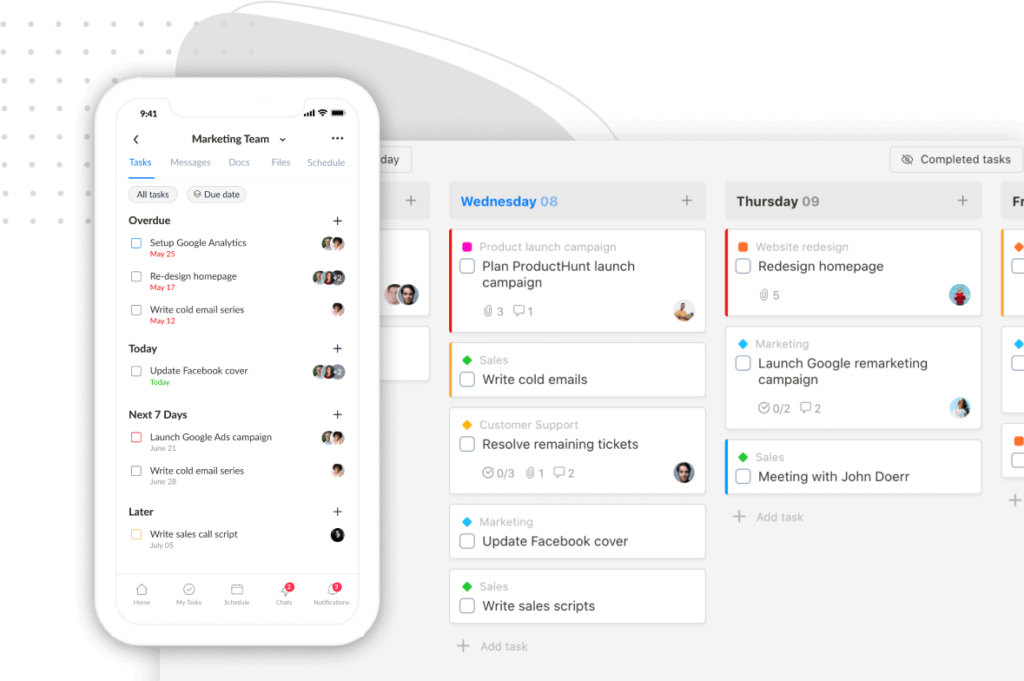It’s Monday morning, and that sinking feeling hits you. There are too many tasks to do for the whole week, and you just don’t know where to start. The day gets sucked into emails and meetings, and by lunch, you realize you haven’t even touched your most important tasks due tomorrow.
Sound familiar? You’re not alone!
But ditch the frustration—this post will show you how to plan your week, prioritize tasks, and boost focus for a calmer, more productive you.
I. Understand your needs
Effective planning is a personal journey – the goal is to find a system that works best for you.
That’s why before you dive into specific planning methods, let’s figure out your current relationship with planning. Here are some questions to get you started:
- Do you have a planning system at all? Maybe you use a calendar app or just scribble things on a piece of paper – whatever it is, tell us about it!
- How well does it work for you? Does it keep you organized and help you achieve your goals, or does it just add to the stress?
- What are your biggest struggles with managing your weekly schedule? Do you find yourself constantly putting things off (procrastination, we’re looking at you!), feeling like there aren’t enough hours in the day, or simply forgetting tasks?
- Imagine your ideal week. What would it look like? Feeling productive and accomplished? Having time for the things you enjoy? Let’s work towards making that a reality!
II. Find the right method for planning your week
Conquering your week starts with the right tools and techniques. Here are the most common planning methods to help you find your perfect match:
1. Planning Staples:
Bullet Journaling: This method combines a calendar, to-do list, and note-taking into a customizable system. It’s perfect for those who enjoy a more creative and flexible approach.
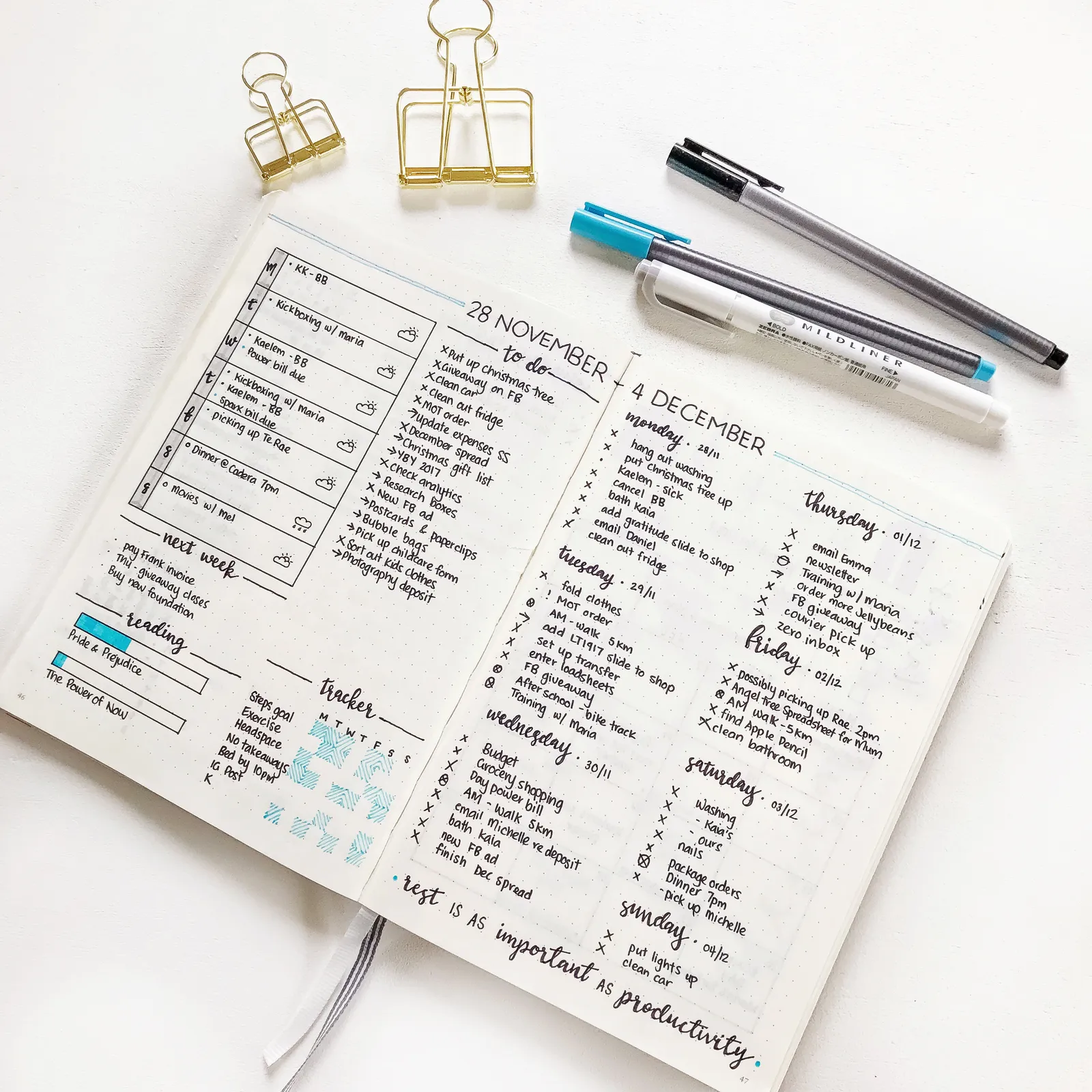
The Classic Calendar: It’s a timeless reason for a reason. A physical calendar or digital app can be a great way to visualize your planned week, schedule appointments, and track deadlines.
The Mighty To-Do List: Sometimes, simplicity is key. A to-do list helps you break down tasks into smaller, more manageable parts and prioritize them, ensuring nothing gets forgotten.
2. Power-Up Techniques:
Time Blocking: This method is scheduling your day in bite-sized chunks, dedicating each block to a specific task. It helps reduce distractions and ensures you dedicate enough time to important projects.
The Eisenhower Matrix: Feeling overwhelmed by choices? This prioritization tool categorizes tasks based on urgency and importance, helping you focus on what truly matters.
3. Digital Allies:
The world of apps offers a plethora of planning tools to suit every need. Here are a few popular options:
Calendar Apps: Offer seamless integration with other digital tools and allow for easy scheduling and sharing.
To-Do List Apps: Provide features like recurring tasks, reminders, and progress tracking to keep you on top of your goals.
Project Management Tools: Ideal for complex projects with multiple tasks and team collaboration.
Hybrid Apps: Perfect for those who crave a unified experience. These apps combine features from calendars, to-do lists, and projects into one user-friendly platform.
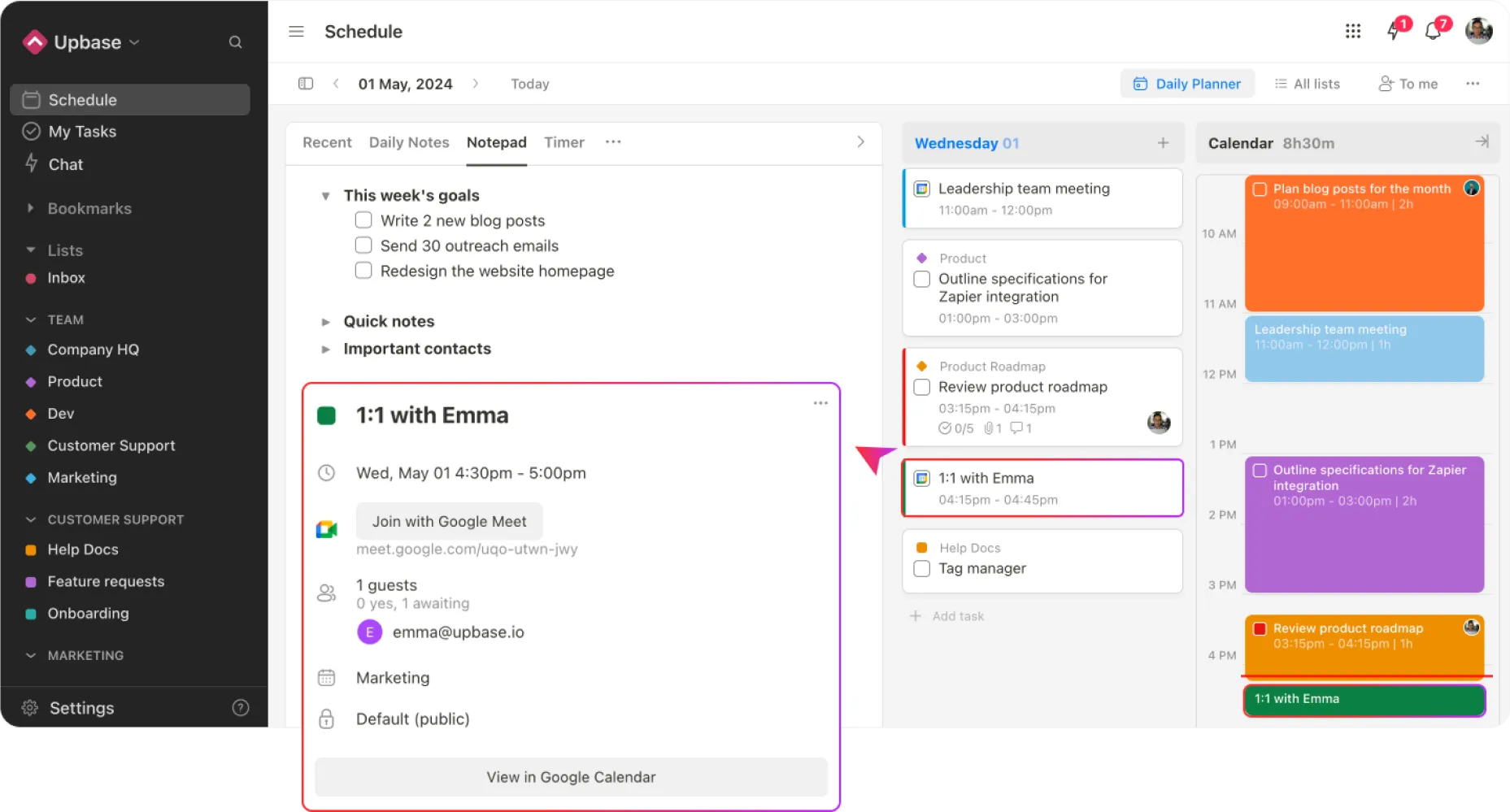
Upbase is a powerful example of a hybrid app designed to streamline your weekly workflow. Even better, it offers a productivity feature set to boost your focus and get things done.
III. How to Plan Your Week to Be Productive and Achieve Goals | Our 10-Step Guide
Without further ado, let’s start planning your week!
Step 1: Review & Reflect (Previous Week)
Before diving headfirst into the following week, take some time to reflect on the week that just passed.
Even if this is the first time you start planning your week, I believe you still have some sense of what worked well and what didn’t in the previous week, right? So don’t skip this step!
It’s a valuable starting point to help you make the next weekly schedule more effective.
But again, I know how overwhelming it is for a complete beginner to follow this step. So here are some guiding questions to get you started with a lighter touch:
- How you felt about the past week. Did you feel stressed, overwhelmed, or accomplished?
- What was the biggest challenge you faced timewise last week?
- Did you feel like you had enough time for the things that are important to you?
- Did you miss deadlines? Did specific tasks fall through the cracks?
- Was there a specific task you kept putting off?
Based on the shortcomings, make adjustments on your approach for the next week and refine your planning skills.
How to make this step effective:
Schedule a dedicated review session at the end of each week (like Sunday evening), or incorporate it into your morning routine on Monday.
Grab your planner, to-do list, or preferred note-taking method, and write down key points from the previous week.
Don’t forget to celebrate achievements, even if they’re small ones, because this helps you get a sense of accomplishment and stay motivated to move forward.
Step 2: Set Realistic Goals (Current Week)
Now that you’ve reflected on the past, it’s time to set your sights on the future! This step involves defining what you want to achieve in the upcoming week.
Here’s a tip: Use the SMART method to craft clear goals that won’t leave you feeling like you’re running a marathon in flip-flops.
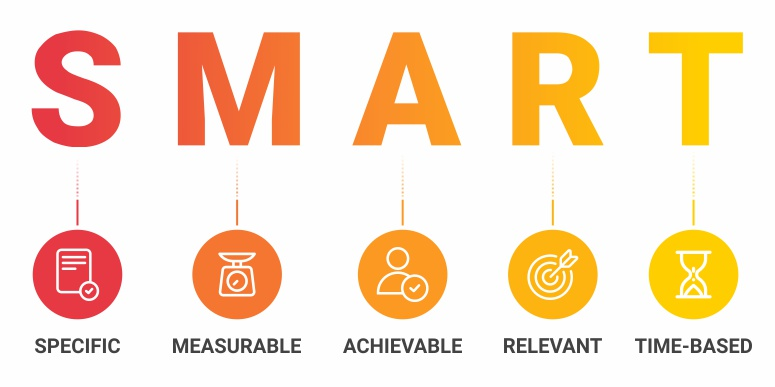
A SMART goal is:
- Specific: Be clear about what you want to accomplish. Instead of a vague “work on that project,” aim for something like “complete the market research phase for the client project.”
- Measurable: Figure out a way to track your progress. This could involve setting milestones (mini-goals!), deadlines, or specific targets you can check off.
- Attainable: Be honest with yourself about what you can realistically achieve in a week. Don’t overload yourself with too many goals – it’s best to focus on 2-3 top priorities for the week.
- Relevant: Make sure your goals align with your bigger picture. Are they helping you reach your overall objectives and priorities?
- Time-bound: Set a specific deadline for achieving your goal. This creates a sense of urgency and keeps you moving forward.
Bonus tips for setting effective weekly goals:
- Quality over quantity: A few achievable goals are better than a giant list you’ll never finish.
- Break down big goals: Feeling overwhelmed by a giant project? Chunk it down into smaller, more manageable tasks. This makes them seem less scary and helps you see the steps needed to get there.
- Consider both professional and personal goals: A healthy work-life balance is important. Include goals that contribute to both aspects of your life.
Step 3: Schedule & Prioritize Tasks
With your goals in place, it’s time to translate them into actionable steps. This involves scheduling specific tasks within your weekly calendar and prioritizing them effectively.
How to prioritize your tasks:
Break down large goals into manageable tasks: Large, vague goals can feel overwhelming. Break them down into smaller, more actionable steps to make them more manageable.
For example, “complete the client project” can be broken down into tasks like “conduct market research,” “draft proposal,” and “schedule a client meeting.”
Prioritize ruthlessly: Use tools like the Eisenhower Matrix or ABC method to categorize based on importance and urgency. This way, you’ll know exactly what deserves your immediate attention.”
How to schedule weekly tasks:
Integrate tasks into your calendar: Once you’ve prioritized your tasks, schedule them into your calendar. This provides a visual overview of your week and helps you identify potential time conflicts.
Consider time blocking.
Step 4: Schedule Buffer Time
Let’s be honest, life has a way of throwing curveballs at the best of our weekly plans.
Unforeseen events, phone calls, and errands you forgot about – they can easily wreck your perfectly planned week. That’s where buffer time comes in as your secret weapon!
What is buffer time?
Think of buffer time as those blank spaces in your calendar, little pockets of free time you intentionally leave unscheduled.
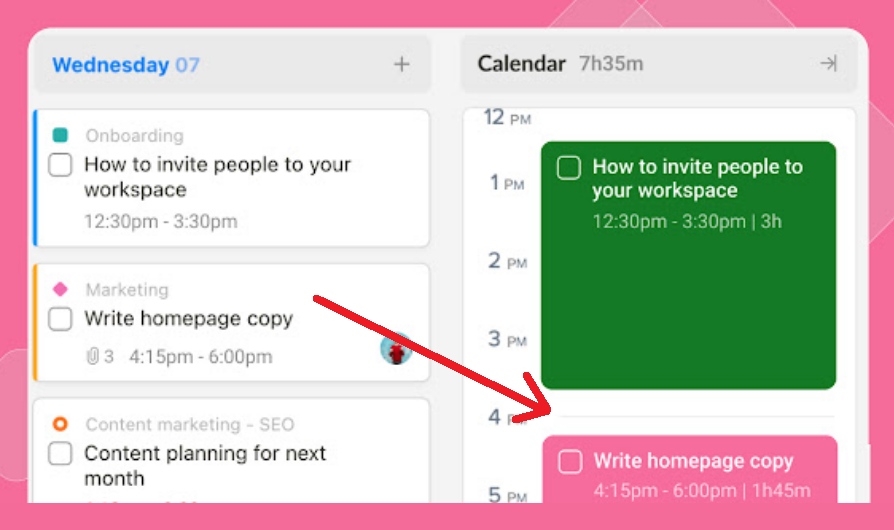
These act like safety nets, catching those unplanned events before they throw the entire week into chaos.
Benefits of Buffer Time:
- Chill Out: Knowing you have buffer time lets you approach your day with a calmer mind. No need to panic if something pops up – you’ve got wiggle room!
- Roll with the Punches: Buffer time gives you the flexibility to adjust your schedule when life throws you a curveball. Meetings run late? No problem, you’ve got some built-in catch-up time.
- Focus Champ: Knowing you have buffer time allows you to focus more during your scheduled blocks. You can concentrate on the task at hand without the constant worry of falling behind, because you know you can catch up later.
How Much Buffer Time Should You Schedule?
The amount of buffer time is personal, like finding the perfect pair of jeans.
Start small – add 15-30 minute pockets of free time throughout your day, especially after important meetings or deadlines.
As you get the hang of planning, see how much buffer time works best for you. Don’t be afraid to adjust it as needed!
Remember, buffer time isn’t wasted time. It’s an investment in your sanity and overall productivity. A little wiggle room goes a long way in keeping you feeling calm, focused, and in control of your week!
IV. Extra Tips for Maintaining Your Productivity Levels Throughout the Week
So you’ve prepped an awesome weekly plan – clear goals, prioritized tasks, and buffer time like a boss! Now comes the fun part (well, maybe not entirely fun) – actually getting things done throughout the week. Here are some tricks to stay focused, motivated, and crushing your to-do list:
Conquering Procrastination:
We’ve all been there – that giant task looming over us, making us want to do anything but tackle it. Here’s how to fight back:
1. Chunk it Down: Break that big, scary task into bite-sized pieces. It’s much less intimidating to check off smaller steps, and before you know it, you’ll be done!
2. Set Doable Deadlines: Don’t set yourself up for failure with unrealistic deadlines. Pick achievable dates that keep you motivated and moving forward.
3. The Pomodoro Power-Up: Try the Pomodoro Technique! Work in focused 25-minute bursts with short breaks in between. It helps you concentrate and avoid burnout. Plus, who doesn’t love a mini-break reward?
4. Reward Yourself: Celebrate your wins! Set small rewards for completing tasks, like a quick walk or a coffee break. Positive reinforcement goes a long way.
Staying Focused:
Focus is key to getting stuff done. Here’s how to stay sharp throughout the day:
5. Ditch the Multitasking Myth: Multitasking might seem efficient, but it actually hurts your productivity and increases mistakes. Focus on conquering one task at a time.
6. Batch Similar Tasks: Group similar tasks together. For example, schedule a dedicated email response block instead of constantly checking your inbox. This helps you stay in the zone.
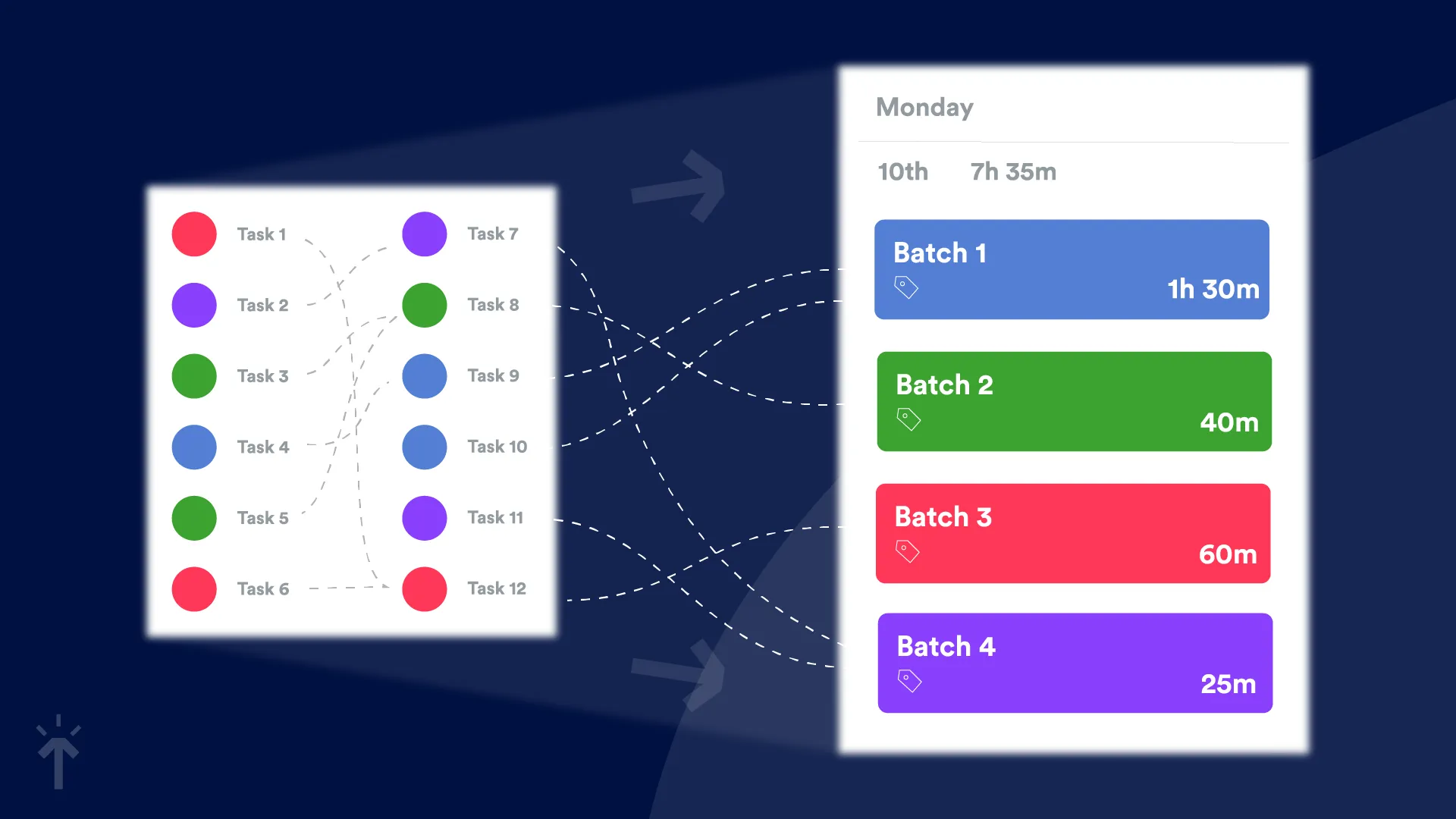
7. Do Not Disturb Mode: Let your colleagues or housemates know you’re on a focused mission and need minimal interruptions for a set period. Peace and quiet can be your best friend here!
Adapting to Change:
Life loves to throw curveballs, and sometimes your best plans need to adjust. Here’s how to stay flexible:
8. Daily Check-In: Take a few minutes each morning to review your daily plan. Did anything pop up that needs adjusting? Be ready to adapt as needed.
9. The Power of “No”: Don’t be afraid to politely decline extra commitments if your plate is full. It’s okay to prioritize your existing schedule and say no sometimes.
10. Reassess and Refine: Did a surprise meeting throw your whole plan off track? Take a deep breath and reassess. Reschedule tasks, delegate if possible, and adjust your goals for the week. It’s all about staying in control, even when things get a little crazy.
By embracing these practices, you’ll gain a sense of control over your time and unlock the potential to conquer your week, one well-planned day at a time.
Don’t be afraid to experiment and find what works best for you.
Remember, the journey to becoming a weekly planning pro is an ongoing process. It might not be perfect every week, but the rewards of staying organized and productive are totally worth it.
And let’s not forget to equip yourself with the right planning tool. You can refer to this list of top weekly planners apps on the market or if you need a shortcut, we suggest Upbase.
How Upbase makes your planning a breeze
Upbase has a robust Schedule tool where you get all the necessary features to plan your days, weeks, and months with ease:
- Tasks with various attributes like priorities, start dates and times, due dates and times, repeat, reminders, tags, subtasks, etc.
- Daily and weekly calendars with drag-and-drop interface, color-coding, and time blocking.
- Weekly backlogs: a place to store tasks for the week without exact due dates, to be scheduled later.
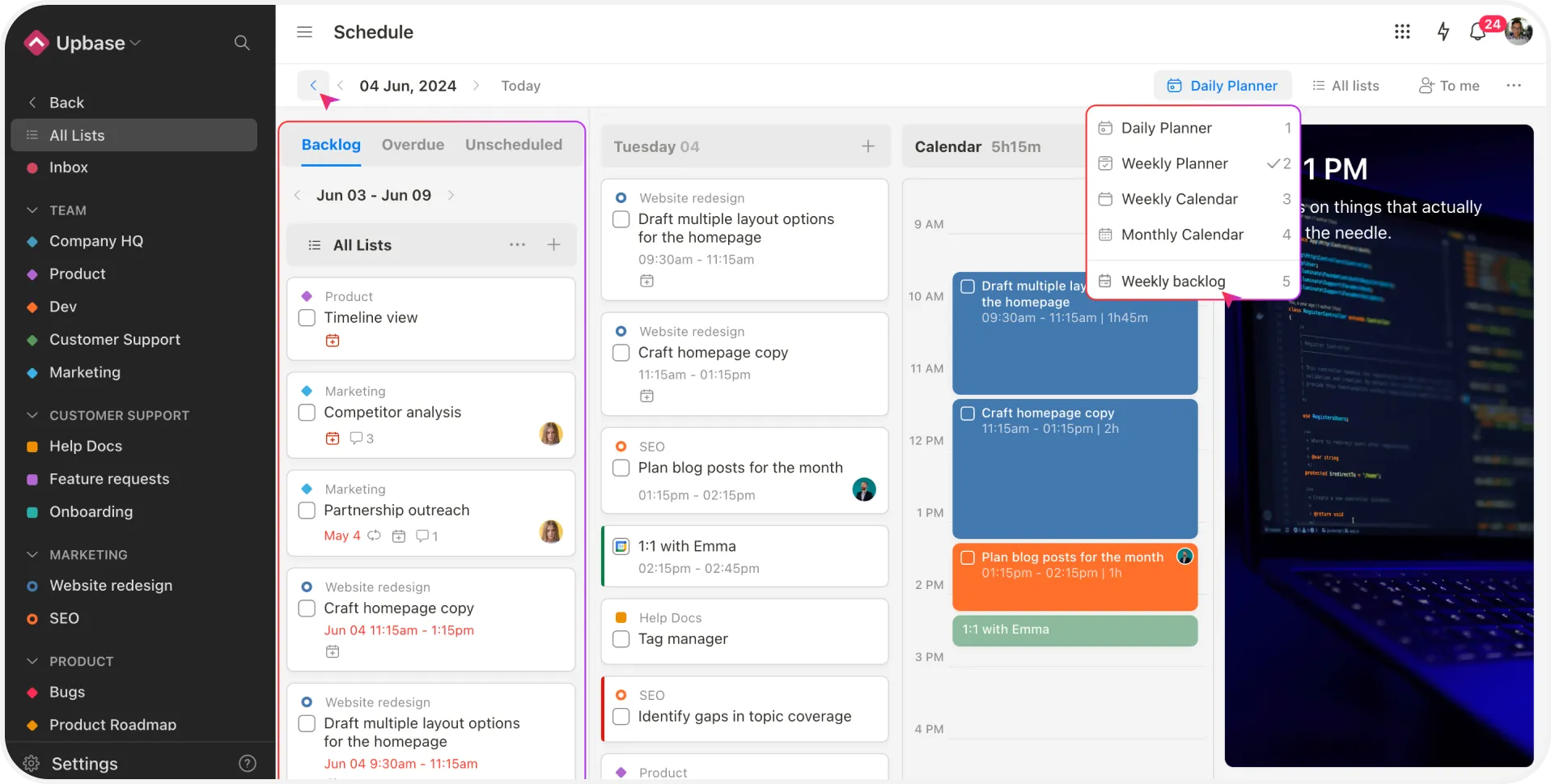
The app also offers extra features to enhance your planning and efficiency, such as Pomodoro timers, ambient sounds, Weekly Notes for goal setting and weekly reflection, etc.

Upbase goes beyond weekly plans and to-do lists! It lets you manage both personal and work tasks seamlessly without having to juggle multiple apps.
Organize different types of tasks with dedicated project lists. In each list, Upbase even offers dedicated tools for project data, schedules, and team discussions (if needed).
Upbase helps you conquer your week, not drown in it. On top of that, Upbase doesn’t break your bank. It offers one of the most generous free plans on the market.
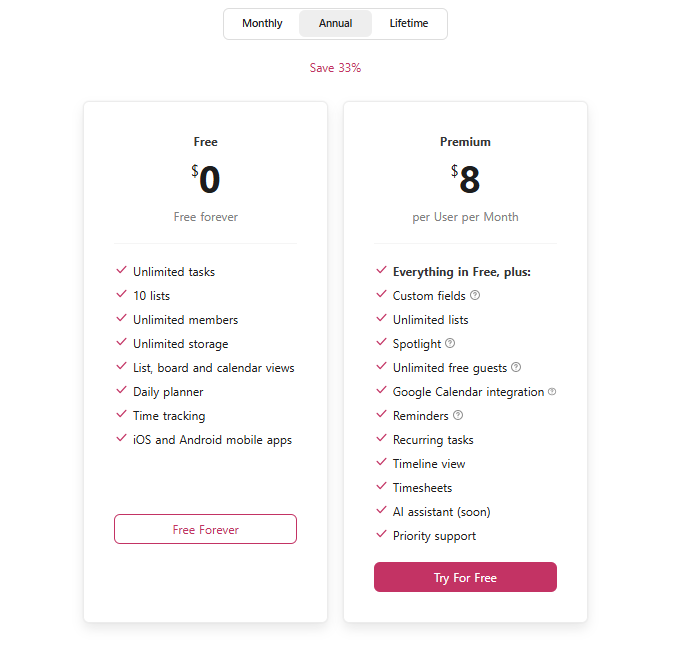
So why hesitate, give it a try!
FAQs
1. How to create a weekly plan?
Creating effective weekly plans involves five steps: 1) reflect, 2) set goals, 3) create a weekly schedule and prioritize tasks, 4) add buffer time for unplanned events, and 5) maintain focus.
2. Why is planning ahead important?
Planning ahead is important because it helps you:
- Focus on urgent tasks.
- Not waste time on unimportant tasks.
- Know what to do and when throughout the next week, so you won’t feel overwhelmed.
- Balance your professional life with personal goals
- Easily see if your short-term goals align with yearly goals.
